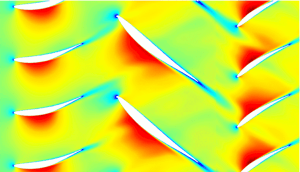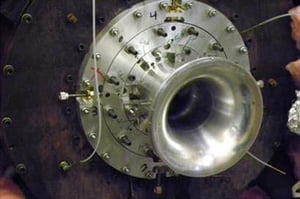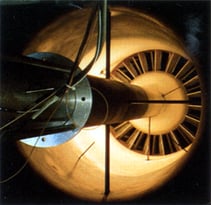The Gyroscopic Effect
This post covers one of the fundamental issues that makes rotordynamics a unique subject: The Gyroscopic Effect. The gyroscopic effect can be observed in the behavior of spinning tops, fidget...
A blog on what's new, notable, and next in turbomachinery
Historically, testing has played a critical role in the turbomachinery design process and multiple rounds of “design, test, analyze, repeat” were not uncommon. Today however, the industry seems to be drifting away from development testing. Often, the only scheduled test in a development program is the performance validation test of the first assembled system. I believe this trend exists for three main reasons:
Increased use of complex CFD solvers in the design process. These programs allow for “virtual prototyping” of turbomachinery without the cost and schedule burdens of conventional testing.
An increase in the size and quality of the existing data sets, as companies develop larger and larger quantities of reference data there is lower risk in incremental changes to component design.
The newest generation of aerodynamicists are not as familiar with the history of testing in turbomachinery and often are heavily invested and reliant on computational modeling.
The trend away from testing has both positive and negative consequences. The use of  comprehensive turbomachinery design software, such as our Agile Engineering Design System®, allows for drastically shortened design cycle times over previous generations of design methods. This decrease in man-effort, along with the accuracy of today’s CFD software packages, brings down development costs significantly. The functionality of these computational codes in the hands of a skilled designer can often eliminate the need for development testing in cases where the aerodynamicists are working in a well-established design space.
comprehensive turbomachinery design software, such as our Agile Engineering Design System®, allows for drastically shortened design cycle times over previous generations of design methods. This decrease in man-effort, along with the accuracy of today’s CFD software packages, brings down development costs significantly. The functionality of these computational codes in the hands of a skilled designer can often eliminate the need for development testing in cases where the aerodynamicists are working in a well-established design space.
The negative side of the trend is that it has created a reliance on CFD software in instances where its application can often lead designers astray. When working near or interpolating between known data sets, modern CFD codes can work quite excellently. However, when the further the designer extrapolates from the known, the less reliable the results become. When one is trying to innovate in the turbomachinery market, it is a near certainty that the aerodynamicist will have to move beyond the comforts of the well-established design space. This is the area in which development testing becomes critical.

When developing new technologies, the ideas are usually investigated and refined through the use of software. As the design begins to take shape and has been optimized, it becomes the time to test. With good reliable test data in hand, the aerodynamicist can evaluate the design and their computational model. First, working to match their computer-generated predictions to the experimental data, then, with their computational model securely anchored by this test data, they can revise the geometries to further increase performance. It is also critical for the test engineer to understand the nature of computational modeling to design a test that best aligns with the designer’s model. In this way, the correlation of the experimental data to the CFD can be as strong as possible.

While the amazing strides that CFD has made in both accuracy and fidelity have reduced the need for testing in many design applications, when it comes to innovative and novel design, testing should still play a critical role. In these instances, experimental testing and computational analysis can work hand-in-hand to push the boundaries of turbomachinery development to deliver the best next-generation products.
Tags: Engineering, Testing
By Thomas Gresham, Senior Mechanical Design Engineer
Mar 6, 2024
This post covers one of the fundamental issues that makes rotordynamics a unique subject: The Gyroscopic Effect. The gyroscopic effect can be observed in the behavior of spinning tops, fidget...
By David Pincince, Business Development & Marketing Manager, Advanced Turbo Products
Nov 17, 2023
The United States is returning to the moon – to stay – and the team at Concepts NREC is helping them get there.
By Kate Guerrina, Marketing Manager
Mar 28, 2023
Artificial Intelligence (AI) uses algorithms and machine learning techniques to analyze and evaluate a research topic, making it fast and easy, while research going through peer review is rigorously...